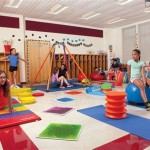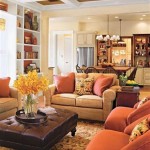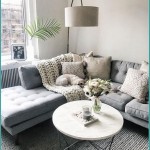How To Decorate a 2-Year-Old's Bedroom
Decorating a two-year-old's bedroom presents a unique opportunity to create a space that fosters creativity, encourages learning, and provides a comfortable sanctuary. This involves careful consideration of several factors, from color palettes and furniture to safety measures and storage solutions. This guide outlines key considerations and practical advice for designing a functional and engaging bedroom for a two-year-old.
Choosing a Theme: While not mandatory, a theme can provide a cohesive framework for the room's design. Popular themes for this age group include animals, transportation (cars, trains, airplanes), or favorite characters from books or television shows. However, it's essential to select a theme that can adapt as the child grows and avoid overly specific or trendy themes that might quickly lose their appeal.
Color Palette: Color significantly impacts a child's mood and development. Soft, calming colors like pastels (blues, greens, lavenders) are often recommended for promoting relaxation and sleep. Brighter colors can be incorporated as accents to stimulate creativity and playfulness. It is advisable to avoid excessively stimulating colors like bright reds or oranges in large areas, especially near the sleeping area.
Furniture Selection: Functionality and safety are paramount when choosing furniture. A toddler-sized bed is essential, ensuring safe and easy access. Consider a bed with guardrails to prevent falls. A low bookshelf accessible to the child encourages independent exploration of books. A small table and chairs provide a dedicated space for creative activities like drawing and puzzles. Durable, easy-to-clean materials are crucial for this age group.
Storage Solutions: Effective storage is vital for maintaining a clutter-free and organized space. Open shelving or low storage bins allow children to easily access toys and books, fostering independence. Clearly labeled bins with pictures or words can further assist in organizing and teaching organizational skills. Utilizing vertical space with wall shelves or tall storage units maximizes floor space for play.
Flooring Options: Safety and comfort should guide flooring choices. Soft flooring options like carpets or rugs provide cushioning for falls and a comfortable play surface. Ensure any rugs have a non-slip backing to prevent accidents. Hardwood or laminate flooring offers durability and ease of cleaning but may require area rugs for warmth and comfort. Avoid small, loose rugs that could present a tripping hazard.
Wall Decor: Walls offer a canvas for stimulating a child's imagination. Wall decals featuring animals, letters, or numbers can be both decorative and educational. Framed artwork featuring the child's favorite characters or scenes can personalize the space. Chalkboard paint creates an interactive area for drawing and creative expression. Hanging a growth chart allows tracking the child's development and adding a personal touch.
Lighting Considerations: Adequate lighting is essential for both play and relaxation. A dimmable overhead light allows adjusting the light level based on the time of day and activity. A nightlight provides a sense of security and comfort during the night. A bedside lamp facilitates bedtime stories and quiet activities before sleep. Natural light should be maximized where possible, as it contributes to a positive and uplifting environment.
Safety Measures: Childproofing the bedroom is crucial. Secure furniture to the walls to prevent tipping accidents. Cover electrical outlets with safety plugs. Install window guards or cordless blinds to eliminate strangulation hazards. Keep small objects and toys that pose choking hazards out of reach. Regularly inspect the room for potential dangers as the child grows and becomes more mobile.
Textiles and Soft Furnishings: Soft furnishings add comfort and warmth to the room. Choose soft, hypoallergenic bedding and blankets. Curtains or blinds provide privacy and control light levels. Cushions and beanbag chairs create cozy reading nooks. Ensure all textiles are washable and easy to clean.
Play Area Design: Designate a specific area for play to encourage organization. This could be a corner of the room or a dedicated play area within the room. Provide age-appropriate toys and rotate them regularly to maintain interest and prevent boredom. Incorporate open-ended toys like building blocks and play dough to stimulate creativity and imagination.
Personalization: Incorporate elements that reflect the child's individual interests and personality. Display their artwork or favorite toys. Include photographs of family members and loved ones. Create a personalized space where they feel secure and loved. This personalization contributes to a sense of ownership and belonging.
Creating a stimulating and nurturing environment for a two-year-old requires careful planning and attention to detail. By considering these factors and prioritizing safety, functionality, and age-appropriate design, one can create a bedroom that supports the child's development and provides a cherished space for years to come.


How To Decorate A Toddler S Bedroom I Take You Wedding Readings Ideas Dresses Theme

Pin On Fashion

A Guide To Setting Up Montessori Room For 2 Year Old

Tips To Create A Toddler Room I Take You Wedding Readings Ideas Dresses Theme

A Little Girls Bedroom

20 Undeniable And Easy Shared Bedroom Ideas For Kids


Pin On Seriously Crafty Ideas

How To Decorate A Toddler S Bedroom I Take You Wedding Readings Ideas Dresses Theme
Related Posts







